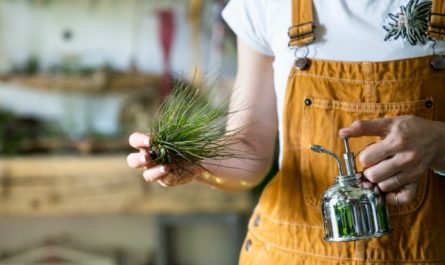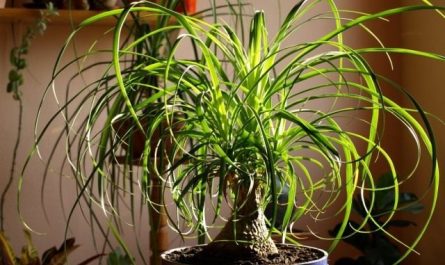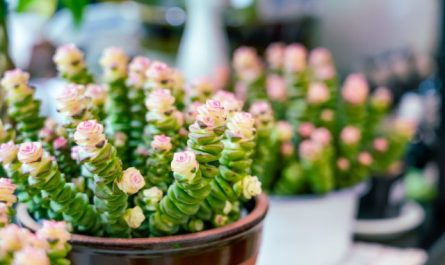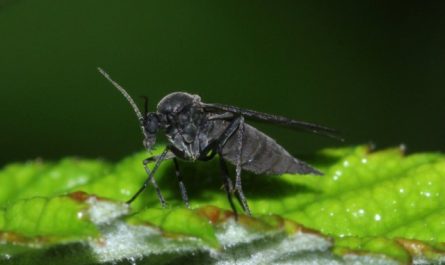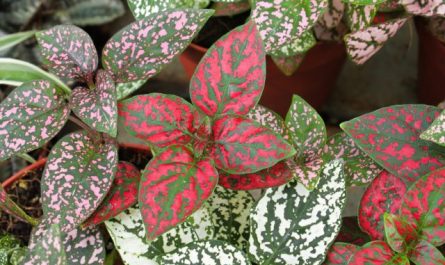Orchids have long been a symbol of beautifully blooming indoor plants. Elite and irresistible, they require special attention and offer to admire luxurious flowers, which simply cannot be equaled. And for the sake of their beauty, most gardeners are ready to endure the difficulties of care, and create special growing conditions, and come to terms with the fact that the leaves of all orchids are not remarkable at all. But there are exceptions to all rules: in the huge orchid family, there are also plants in which the most outstanding part is not the flowers at all, but the leaves. For their beauty, reminiscent of precious stones, then various metals, filled with almost jewelry details, such orchids received the nickname “precious”.

They are not easy to find, but each plant is absolutely irresistible. And although they are not considered easy and undemanding houseplants, the rare beauty of these species deserves to be ranked with the best orchids in bloom.
Precious patterns of variegated orchid foliage
Orchids have no more advantages than disadvantages. These plants can boast both a rare palette of colors and patterns, and graceful flower shapes. But they are no less characterized by their love for specific growing conditions and high demands on care. One of the main disadvantages of all orchids is considered to be a limited period of decorativeness. When the beautiful flowering ends, the plants are instantly lost in the collection and do not stand out from other crops in winter mode. But there is a surprising exception to this rule. Precious, or variegated orchids retain their attractiveness throughout the year and look fresh at any time.
But the main advantage of these rare, but not the most capricious orchids is still much more spectacular foliage, which is not inferior in beauty to the flowers of more popular species. The greenery of precious orchids cannot be called plain. Variegated, spectacular, it immediately attracts attention with the play of textures and unusual reflections of veins that literally glow on the leaves. Such orchids are called precious because the texture of the leaves resembles gems and veins of precious metals. The second name of this group of decorative miniature orchids is a more modest name “variegated orchids”.
What are “precious orchids”?
Jewel orchids are compact terrestrial species of the Orchidaceae family. All plants belonging to this group of orchids without exception are miniature and collectible. In nature, foliage orchids can be found in Madagascar, Australia, South and East Asia. These are varieties with velvety leaves decorated with luxurious pubescence, silvery or golden veins, nets and cobwebs of patterns.
They have a basic cherry, gray, dark green or light green color combined with contrasting luminous patterns. But what variegated orchids definitely cannot boast of is the beauty of flowering. It is inferior to absolutely all representatives of the orchid family, but at the same time it can still surprise with unusual details. Precious orchids produce simple small flowers, most often white, collected in loose brushes of inflorescences.
Against the background of velvety-metallic greenery, the flowers seem radiant and surprisingly simple, but at the same time the contrast enhances their modest beauty and draws attention to the main advantages of the plant. The undoubted advantage of these species is also a strong aroma.

Types of precious orchids
Despite the fact that in nature you can find about 220 species of variegated beauties, only a few species have become widespread in indoor culture. The group of indoor precious orchids unites 6 species of plants, not all of which are popular. The three undisputed leaders among precious orchids are ludisia (Ludisia), macodes (mac codes) and anectochil (anoectochilus). Less often in collections you can find dossinia (dossinia), zeuxine (zeuxcine) and Goodyear (goodyera), although interesting colors are also typical for them.
Makodes (mac codes) – sympodial epiphytes or terrestrial orchids with creeping shoots reaching a height of 7-8 cm and densely branching. One of the most popular types of precious orchids macodes petola (macodes petola) – variegated plants that produce perfect oval leaves up to 7,5 cm long with an elegant pointed edge and velvety pubescence. The dark green, light green, emerald or grayish base of the wide leaf blades is crossed by longitudinal veins, between which various patterns diverge like a thin web.
Due to the special combination of shades of color, it seems as if the leaves of the macodes are decorated with golden lace or a craquelure effect. This orchid is capable of releasing up to 20 white-brown, largely inconspicuous flowers, rising on high peduncles in the fall. After flowering, the old rosette dies, forming lateral shoots.

If the height of the Macodes Petola does not exceed 7-8 cm, then a larger and more spectacular species Mark Sander (Sanderiana codes) can boast of a greater height (from 15 cm), and leaves exceeding 15 cm in length, and a copper effect of shining veins.
Dossinia (dossinia) is very similar in appearance to macodes. But it has larger leaves and less spectacular veins. In indoor culture, there is only one species – dossinia marble (marbled dossinia).

Formerly known as gemaria (haemaria), and today has acquired its legal name ludisia, or people (Ludisia) the precious orchid is presented for sale by only one species – Ludisia versicolor (Discolored playfulness), we have variations of the name Ludisia versicolor and Ludisia bicolor.
Hemaria or Ludisia is a more powerful plant than Macodes. It has creeping shoots with oval leaves with beautiful pointed edges, which also boast contrasting patterns. Against the background of very dark leaf blades, longitudinally located, symmetrical and asymmetrical white-silver veins appear. Light lines shimmer against the background of amazingly beautiful shades of olive or purple blades. The back of the leaves is painted in bright purple, beautifully contrasting with the precious patterns on the upper side. This plant produces cream flowers that form very beautiful lace inflorescences.
Ludisia itself always seems noble, graceful, a real aristocrat. Ludisia has many varieties and forms: from the most famous red-brown with pink veins form ‘Dawsoniana’ to snow-white’Alba ‘, black and silver ‘Odin’ and series of varieties’Velvet’ – dark green with light veins ludisia’Green Velvet’, emerald ‘Emerald Velvet’, bluish ‘Jade Velvet’, bluish ‘Sapphire Velvet’, purple-pink’Red Velvet’, silvery ‘Silver Velvet’, swamp’Jasper Velvet’.

Anectochil, or Anectochilus (anectochilus, anoectochilus) will not exceed 15 cm in height and is also decorated with silvery or golden veins. The patterns on its green or greenish-brown leaves seem to be cracks, perfectly emphasizing the glossy texture and impeccable shape of the ovoid leaves with a sharp tip. Sometimes the veins cover the leaf in such quantity that the base color is almost invisible. The foliage is larger than that of Macodes, and the orchid itself forms a denser rosette. But what is most surprising about this orchid is the very high inflorescences, seemingly disproportionate to the plant itself, bearing a lush brush of nondescript flowers.
The following species are particularly decorative: anectochilus spectaclus (anoectochilus formosanus), Anectochilus roxburghii (anoectochilus roxburghii, some forms are still distributed among us under the name of Anoectochilus reginae (royal anoectochilus) and Anectochilus striata (Anoectochilus vittata). Less common. Anectochilus sikkimense (anoectochilus sikkimensis, today reclassified as Anectochilus brevilabii (anoectochilus brevilabris).
Worthy of attention and anectomy (anoectomaria) is a hybrid that is free from all the disadvantages of anectochilus in terms of care and does not require a dormant period.

Goodyear or Goodyear (goodyera) flaunts more fleshy, very beautiful precious leaves, painted in a variety of shades of green. Rosettes are massive and remain for several years. The veins of these orchids are not metallic, but pink or white, less often – almost blue. Goodyear bristly, or hispida (goodyera hairy) is the most well-known species. It is less common to encounter creeping goodyera (goodyera repens), Goodyear mesh (goodyera reticulata) and Fluffy Goodyear (goodyera pubescens).



Caring for precious orchids at home
Due to their rarity and status as precious plants, variegated orchids are often considered one of the most difficult orchid groups to grow. But this opinion is completely unfair. It is simply necessary to create quite specific conditions for these species and maintain stable humidity and air temperature. Otherwise, growing them even indoors is not at all difficult. If you collect orchids, you can use precious species to replenish the assortment of plants in florariums, flower displays, mini-greenhouses. But it is quite possible to grow variegated orchids in greenhouses and in ordinary living spaces.
Lighting for variegated orchids
The easiest way to choose comfortable lighting for precious orchids is to choose the right one. These species love light, but need diffused lighting, do not tolerate direct sunlight and do not respond well even to light partial shade. Only Macodes and Goodiera tolerate shading well, which looks more impressive when grown in the back of the room. But at the same time, they grow equally well both with completely artificial lighting and in natural conditions. Due to the fact that additional lighting can completely replace the usual maintenance regime, precious orchids can be placed not only on windowsills, but also in the darkest rooms of the house (for example, in the bathroom) or in the back of the interior.
When grown in natural conditions, precious orchids are best placed on eastern and western windowsills. With artificial supplementary lighting, it is enough to use supplementary lighting for 12 hours a day with the phytolamp located at a distance of 30 cm from the plant.
The only thing that simplifies the cultivation of “jewels” is the fact that the plants themselves signal the need to either make the lighting more intense or, on the contrary, shade the crop. With too much light, variegated orchids produce leaves that are too densely located, upright, or, on the contrary, atypically drooping. But in the shade, the leaves become smaller, are located on the shoots too sparsely, the internodes lengthen, indicating that the precious orchid needs to be provided with brighter light.

Temperature conditions for variegated orchids
Temperature requirements are often associated with myths about the capriciousness of precious orchids. In fact, it is quite easy to provide them with comfortable conditions. Variegated orchids feel great in the range of normal room temperatures. They do not tolerate cold snaps, or temperatures below 18 degrees. But they are not afraid of heat and recover well even with sharp temperature fluctuations above the minimum range. Dropping the indicators below 18 degrees will inevitably lead to a loss of decorative leaves and a premature start of the flowering period.
There are specific requirements for individual species: Ludisia likes the temperature at night to be 4-5 degrees lower than during the day (and Macodes and other variegated orchids grow better in such conditions).
Only anectochilus needs a period of rest after flowering: for it, the temperature is lowered at least slightly, by 2-4 degrees, during the wintering period.

Air humidity and watering
Providing variegated orchids with comfortable air humidity is indeed the most difficult moment in their cultivation. It is because of this parameter that such orchids are classified as plants that are best grown in indoor greenhouses or flower display cases. But the status of moisture-loving crops attributed to these plants contains a lot of false data. Precious orchids feel great even in ordinary living rooms, they do not necessarily have to be displayed only in a florarium, since optimal air humidity can be achieved by simply installing a humidifier. The least demanding is Ludisia, which tolerates relatively average humidity. The rest need humidity of at least 70%.
Plants belonging to the group of precious orchids require quite intensive watering, and the procedures should be carried out at short intervals. Complete drought, drying of the substrate even in the middle part should not be allowed. Precious orchids grow well only when stable medium-high soil moisture is maintained and only the top layer of soil dries out. The watering method is either classical or by immersion in water to saturate the substrate. In the cold season, watering is adjusted according to the rate of drying of the soil. Only for anectochilus, during the winter, the humidity is reduced by approximately half.
Particular attention should be paid to the quality of water. For variegated orchids, use only melted, rain, distilled or boiled water.

Fertilizers for “jewels”
Fertilizers for precious orchids are applied in the traditional way, in liquid form together with water for irrigation. For these plants, it is advisable to use the full dose recommended by the manufacturer, carrying out procedures with a frequency of 1 time in 3 weeks in spring and summer and 1 time in 5 weeks in autumn and winter. But it is better to apply fertilizers not at once, but to divide into 2-3 parts and add a little during each watering. Low-intensity, maximally frequent procedures allow to achieve optimal absorption of nutrients, active growth of the most spectacular greenery.
For variegated orchids, only special fertilizer mixtures intended for members of the orchid family can be used.
Containers, substrate and replanting
Pots in which precious orchids are grown should be given special attention. Like ordinary orchids, variegated species should be grown in special orchid containers with holes not only at the bottom, but also on the walls. For these crops, air access to the substrate is very important. For Macodes petola, you need to select tight containers with a diameter of about 6 cm (but for other orchids from the precious group, you should also not choose too voluminous flowerpots).
It is also quite easy to choose soil for variegated orchids. It is best to buy a special substrate for orchids for these beauties. But you can also make your own soil mixture from leaf soil, coarse sand, crushed pine bark or moss (or from leaf soil with moss, pine needles, vermiculite and wood ash). For ludisia, a peat-based substrate is suitable, to which half-decomposed leaves and crushed bark have been added. Whichever option you choose, be sure to make sure that the substrate really does contain an increase in sphagnum.
The precious orchid needs not only a coarse substrate that can effectively retain moisture, but also a decorative soil that would not spoil the attractive greenery. With proper care, moss actively develops quickly, grows, and forms a green background for luxurious leaves. The acidity of the substrate for variegated orchids should not exceed 6,5-7 pH.
No less important than choosing the right substrate is laying a high, powerful drainage. Drainage material, especially if vermiculite or perlite is used, can be added to the substrate itself. Repotting is carried out as needed, according to the same principles as for ordinary orchids.

Pests and diseases of precious orchids
These plants cannot boast of great resistance to diseases. With excessive development of sphagnum, lack of control over the moss, precious orchids are threatened by stem rot. It can only be fought by emergency transplantation with mandatory scalding of the substrate. If fungal infections spread among precious orchids, at the first signs of damage, it is necessary to immediately remove damaged leaves and treat the cuts with crushed coal.
Precious orchids are also threatened by pests. When comfortable air humidity levels are violated, spider mites quickly appear on the greenery. When using self-prepared substrates, variegated orchids can suffer from slugs and snails, as well as contamination of the substrate with nematodes. They usually lead to serious damage to the stem. The best way to combat this problem is to trim the shoots and process the cuts, followed by emergency transplantation.

Propagation of variegated orchids
Precious orchids are considered to be one of the easiest species to propagate. All plants belonging to the variegated group are distinguished by the ability to root shoots. As soon as the shoots release more than five leaves (they will form four full internodes), a high-quality rootlet will form under one of the first leaves.
You can cut a shoot for rooting only if there are two leaves under the place where the root comes out, and at least two internodes above it (the cut must be made a few centimeters below the root, but not reaching the first lower leaf). Such a cutting is very easy to root. After sprinkling the cut with charcoal and planting it in a substrate suitable for orchids, it takes root very quickly and starts growing.
You can also divide adult, powerful plants, provided that each division contains 2-3 full-fledged shoots with several leaves.

